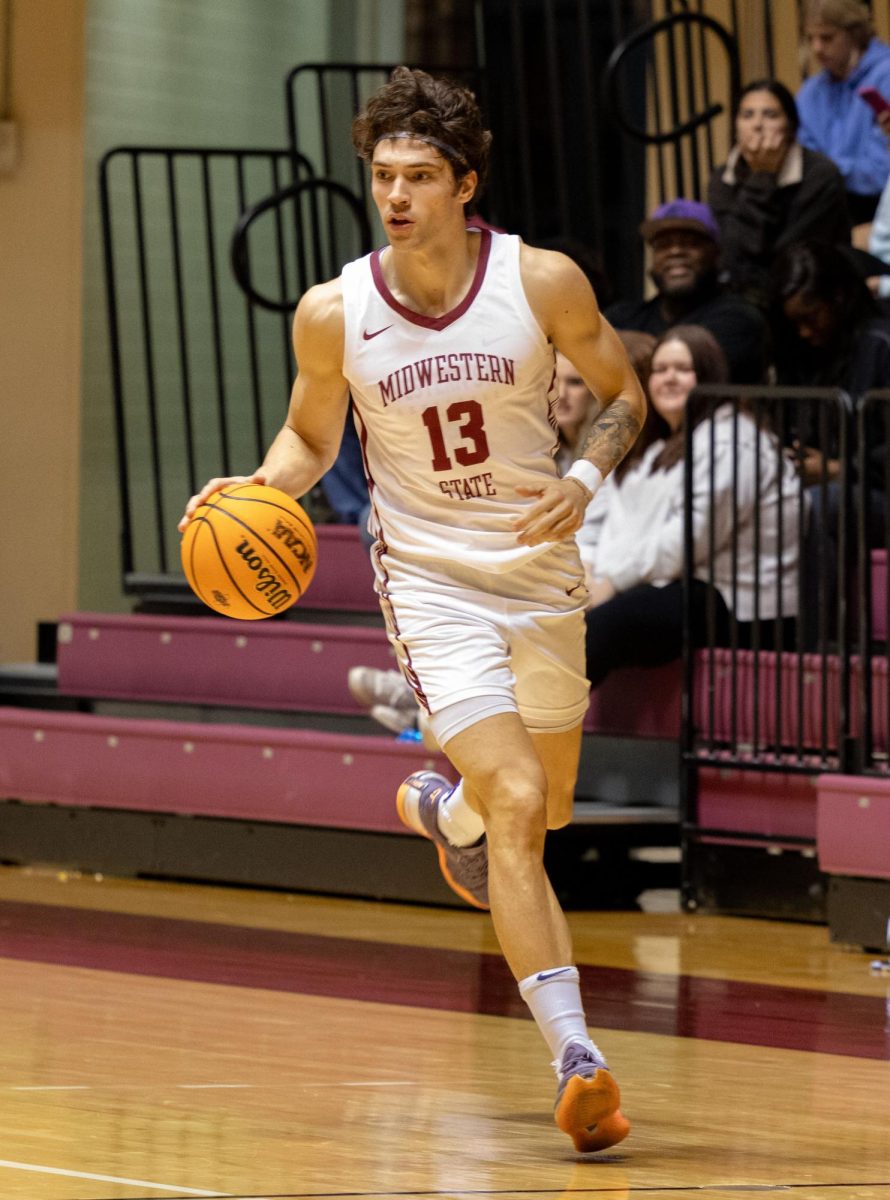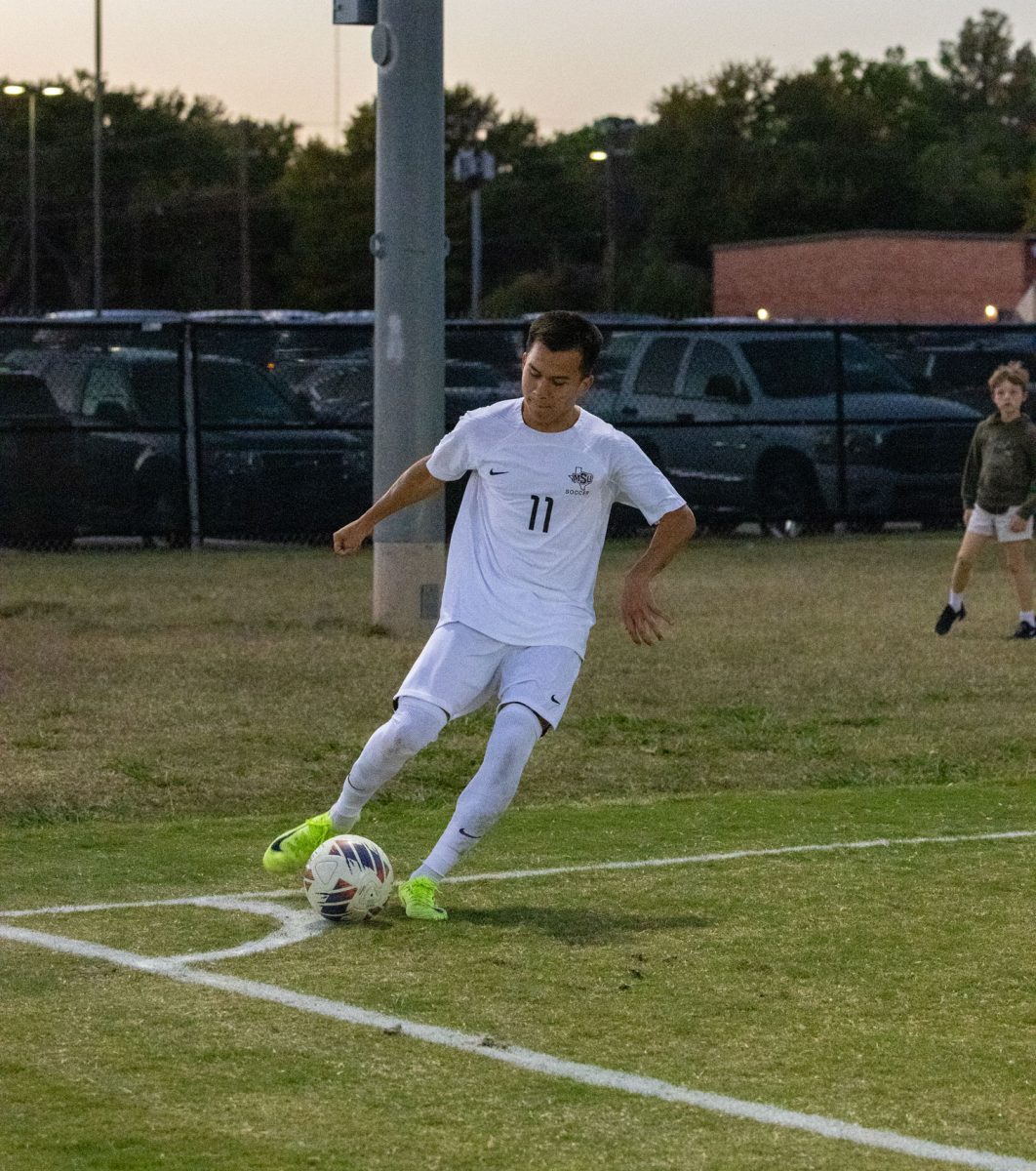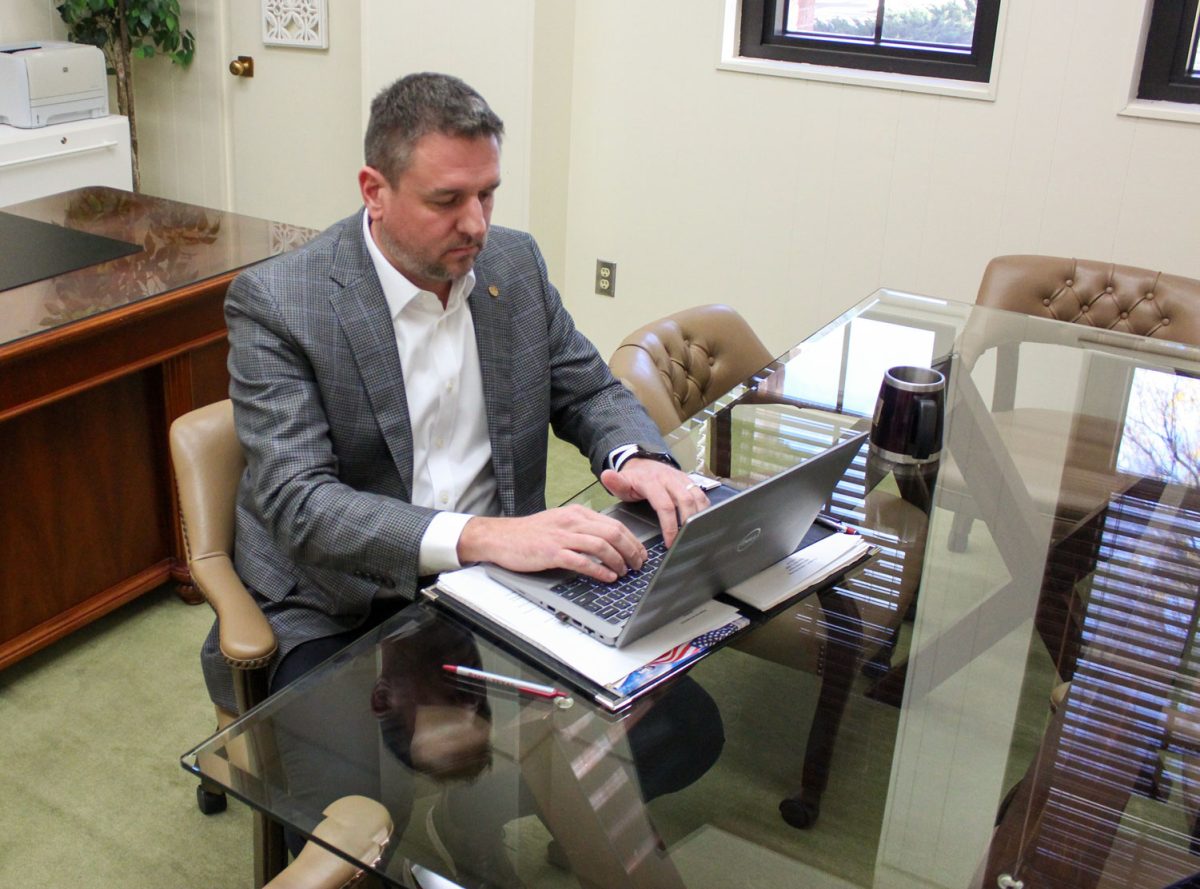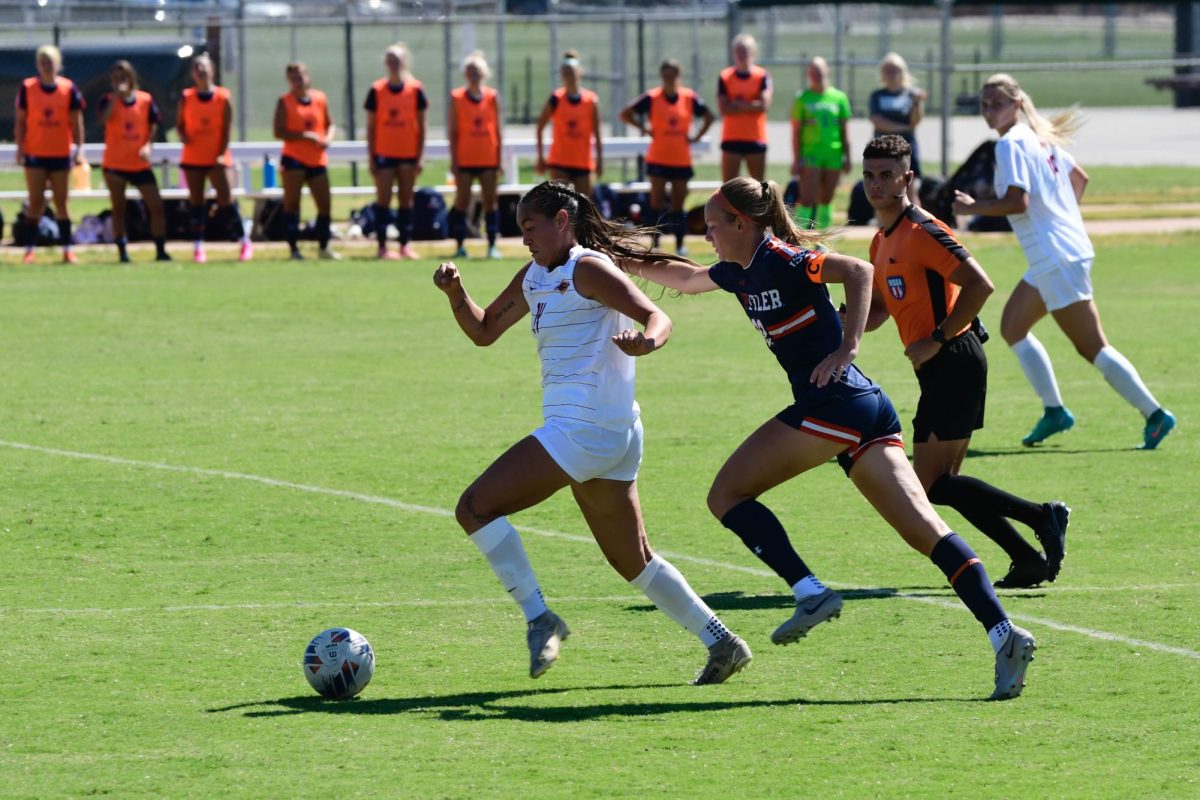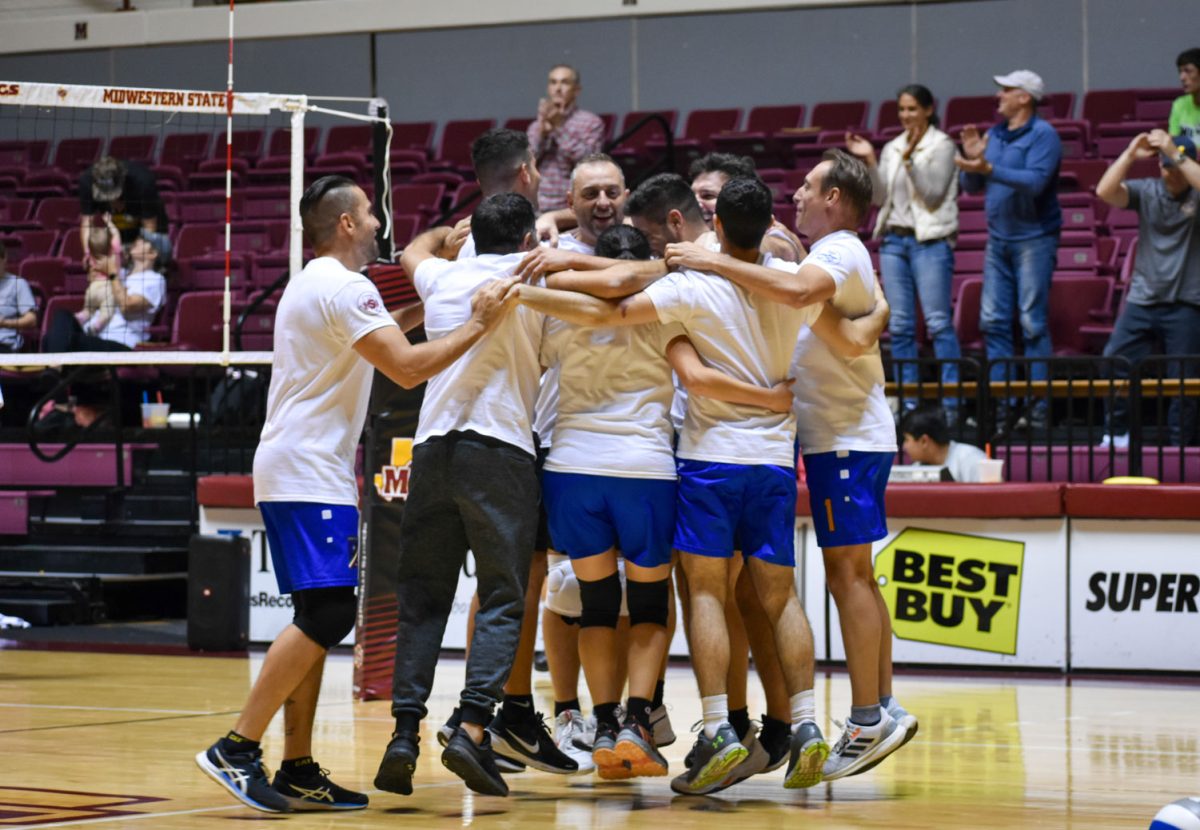Social media has the power to influence lives, and has changed the way university officials do business. Departments and colleges across campus have implemented the use of social media tools to stay relevant, as well as to keep the public informed. Social media gives the university a way to promote their programs and reach out to prospective students, as well as to keep alumni in the loop as to what is happening on campus. As social media tools continue to evolve, the university is finding ways to expand their creativity in promotion and marketing to a much larger audience.
“Social media has become so big, you are in front of everything,” A.J. Lopez, social media coordinator with the Student Affairs office, said. “If you don’t use social media, someone else will find a way to steal your brand without your even knowing about it,” he added.
Lopez said the university is rated one of the top most active performers with engaged users according to the website socialclout.com. The website measures the university’s social media tools and rates its activity and engagement according to the size of the school.
Part of Lopez’s job as social media coordinator is helping to maintain all of the university’s digital media, and he works closely with other departments and colleges on campus.
“I do not deal with anything considered old media, such as newspapers or magazines,” Lopez said. “Most of our students are on Twitter, and that’s the tool we use to inform people about events.”
But other types of social media tools are used for specific audiences and certain types of information. Tools such as Snapchat, Facebook, Instagram, YouTube, LinkedIn and Periscope, help to expand the university’s audience and raise awareness about what is happening around campus, as well as what the university has to offer. Lopez said these platforms of information helps the university stay in touch with current students, faculty and staff, as well as reach out to prospective students.
“Social media use is how we stay relevant,” Lopez said. The higher the engagement among users, the better the results, and we try to use as many ways possible to share information to as many people out there, he added.
Lopez said he knows that students are active social media users and are watching. “Using Twitter to ask questions about admissions, for example, is useful for students because they know they will get a response in real time.” Parents, alumni and other older adults are drawn more to Facebook, so the university posts information which that age group might find interesting and useful. Newer college students use twitter, Instagram, and Snapchat.
“When a new school year begins, that’s when we’ll see the most growth in our social medial followers,” Lopez said.
In August 2015, the number of followers increased in each social media platform: Instagram (1759); Twitter (5544); Snapchat (523); Facebook (9224); and YouTube (93). However, numbers of new followers decreased in September.
“It’s normal, and expected, that we see numbers peak and fall during certain times of the years,” Lopez said. “That is actually what we want to happen.”
Lopez said his goal is to get most, if not all, students to know about events on campus. Lopez plans to expand the use of YouTube more actively beginning with the Mustangs Minutes and the Show with Charles Frazier, because of the importance of videos to students.
The Mustangs Minutes was the president’s idea and is used to share important information about the direction of the university, committees and programs such as EURECA. The MSU Show is about the student’s perspective on different issues around campus and on the daily lives of students.
Lopez said the social media programs have a small budget and they do not pay for advertising on the platforms.
“Engagement rates far better than paying for an ad,” Lopez said.
Julie Gaynor, marketing and public information director, said, “social media is a valuable tool when communicating with a large group of students.” The majority of students don’t look at their MSU email account, so we need to use social media to get the information out to where they are, she added.
The public information office is in charge of publishing press releases and events on the university’s homepage, and then relaying those messages onto Facebook and twitter.
“Many of our followers on Facebook are alumni,” Gaynor said. The Facebook page has 9551 followers in October. “We’re trying to grow our YouTube population as well because videos are popular.”
Gaynor said the benefits of using social media is the ability to get more information disbursed to a larger audience. “It allows engagement and people can share ideas and comments while feeling invested in the university.”
Social media is a part of the university’s efforts in recruitment plans.
Gaynor said a disadvantage to using social media is there is not always complete control.
“Once there is miscommunication, it’s hard to get control of it,” Gaynor said. “You need to work hard to correct it, though users will usually come in and correct minor misunderstandings,” she added.
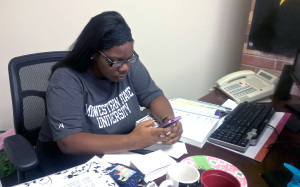
Shayla Owens, student assistant of the Student Government Association, said, “we know that students are online a lot of the time and so we really want to reach out to them in any way we can to help promote school spirit, tell them things that are going on and just make them aware of what MSU has to offer them.”
Owens said the office uses Twitter to communicate events to students, faculty and staff. They have reached more than 500 followers this semester.
“The benefit of social media is that people of all age groups can converse, and it’s a way to stay connected without having to physically be there,” Owens said. “We sometimes assume that everyone uses social media, and that’s not always the case, so we try to make sure we reach as many people as possible by using fliers or putting things in The Wichitan that are coming up,” she added.
Owens said one of the major benefits of social media use in the Student Government Association is the ability to share “the voice of the students” to a wider audience.
Michelle Niebur, electronic access media librarian, said, “we have a presence on Facebook, on Twitter, and Instagram.”
Niebur said the library uses Facebook to reach out to a more general audience including the Wichita Falls community to promote library events, library services and share information related to libraries, literacy, research and community events relevant to its user base.
“We’ve just started efforts to use more social media tools,” Niebur said. “It is a good resource to connect with our users and worth the time invested because we are here to disseminate information,” she added.
The library has five student workers and four staff members working on their social media platforms.
Amanda Walton, graduate school coordinator, said, “everything has to be instant today, and having social media there, to click and instantly see what we’re doing is a great opportunity to keep us fresh.”
Walton said she actively follows other university programs so others will recognize the graduate school’s presence online.
“Schools that use social media reap more benefits than those that do not,” Walton said. “We have more followers on Twitter than on Facebook, and international students are more apt to follow the Facebook page than twitter.
Eighty university programs, services and organizations are using some type of social media tool, and its use within the university continues to evolve and grow. Using social media allows for quick responses and engagement among students, faculty and staff. Departments and colleges across campus utilize different platforms for different audiences and information. The university website includes a social media directory which provides evidence of its growth within the campus.







